List of African American pioneers of Colorado facts for kids
This article is about the amazing African American pioneers who helped build Colorado! These are people who were among the first to settle here or achieved important "firsts" in the state's history. You'll learn about brave women like Clara Brown and Justina Ford, who are even honored in the Colorado Women's Hall of Fame. Their stories show how much African Americans contributed to making Colorado what it is today.
Meet Colorado's Early African American Leaders
| First Name | Last Name | Picture | Born–Died | Year Arrived | What They Did |
|---|---|---|---|---|---|
| Charles | Autobees | (1812–1882) | 1847 | He was a trapper and trader. He also helped found the town of Autobees, Colorado. | |
| James | Beckwourth | 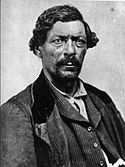 |
(c. 1799–c. 1866) | 1822 (c.) | An American mountain man, fur trader, and explorer. He was born into slavery in Virginia. He worked at Bent's Fort and helped start El Pueblo, which is now Pueblo, Colorado. |
| Clara | Brown | 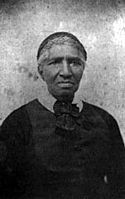 |
(c. 1800–1885) | A successful businesswoman and helper. She used her money to help former slaves settle in Colorado during the Gold Rush. | |
| Isom | Dart |  |
(1849-1900) | Known as Ned Huddleston, he was a rodeo clown and stunt rider. He became a rancher in Browns Park, Colorado. | |
| Elizabeth Piper | Ensley | 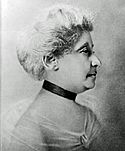 |
(1847–1919) | 1887 | She moved to Colorado and became a leader in the movement for women's right to vote. She was also a journalist and helped start women's clubs. |
| Barney | Ford | 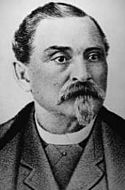 |
(1822–1902) | 1860 | He escaped slavery using the Underground Railroad. He became a successful businessman and fought for civil rights. He also helped freed slaves get an education. |
| Justina | Ford |  |
(1871–1952) | 1902 (c.) | She was the first licensed African American female doctor in Denver, Colorado. She cared for women and children from her home for 50 years. |
| Julia | Greeley | 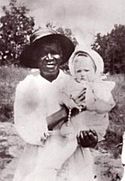 |
(c. 1833-48–1918) | 1865 (c.) | Julia Greeley was born into slavery. After she became free, she moved to Colorado and worked as a domestic helper. Even though she was poor, she gave food and clothes to others and helped spread the Catholic faith. |
| Charlotte | Green | d. after 1850 | 1833 | She was an enslaved cook and entertainer at Bent's Fort. | |
| Dick | Green | d. by 1850 | 1833 | He was an enslaved worker at Bent's Fort. After fighting in a battle, he and his wife were freed. | |
| John T. | Gunnell | (1836–1902) | 1881 (by) | He was a state lawmaker in Colorado. He was the first African American to serve in the Colorado Legislature in 1881. | |
| Edwin H. | Hackley | 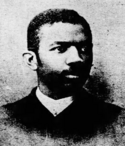 |
(1859–1940) | He was the first Black lawyer allowed to practice law in Colorado (1883). He also published a guide for Black travelers before the famous Green Book. | |
| Emma Azalia | Hackley | 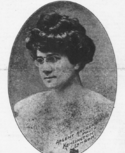 |
(1867–1922) | She was a singer and activist. She encouraged pride in her community by supporting music education for African Americans. | |
| William Jefferson | Hardin | 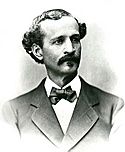 |
(c. 1831 – 1889) | 1872 (by) | Born free in Kentucky, he came to Colorado in 1863. He was the mayor of Leadville and fought for civil rights. He was also the first African American elected to the Wyoming Legislature. |
| Oliver Toussaint (O. T.) |
Jackson | 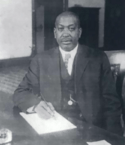 |
(1862–1948) | 1887 | He was inspired to create Dearfield, Colorado, a farming community for Black Americans. Jackson also owned several successful restaurants in Denver and Boulder. |
| Junius R. | Lewis | (1842–1938) | Lewis was enslaved in Mississippi. After the Civil War, he became a teacher, worked for a railroad, and owned a mining company. | ||
| Nancy | Lancaster | 1865 (before) | She and her husband, Samuel, saved money to buy their freedom. A pastor helped Nancy by providing some of the money. They lived in a cabin in Denver. | ||
| Samuel | Lancaster | 1865 (before) | Samuel worked as a barber in mining camps. He earned enough money to buy his freedom. He and his wife, Nancy, lived in a cabin in Denver. | ||
| William J. | Payne | (d. 1864) | 1859 (by) | He arrived in Denver as an enslaved blacksmith. After he became free, he was involved in a court case where he was found innocent. | |
| Edward J. | Sanderlin | 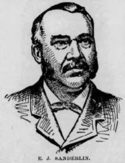 |
(1835–1909) | 1859 | He was born into slavery and came to Colorado during the Pike's Peak Gold Rush. He became a successful businessman in Denver. |
| Joseph H. | Stuart | 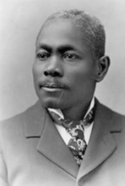 |
(1854–1910) | 1891 | From the British West Indies, he settled in Colorado. In 1891, he became the second Black lawyer to practice law in the state. |
| John | Taylor | 1865 (after) | Born into slavery in Kentucky, he served in the Civil War. After leaving the army, he joined a group of Ute people and settled in the San Juan Valley. | ||
| Henry O. | Wagoner | 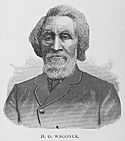 |
(1816–1901) | 1860 | He helped people escape slavery through the Underground Railroad before moving to Colorado. He worked for civil rights and helped pay legal fees for those who had escaped slavery. |
| Madam C. J. | Walker | 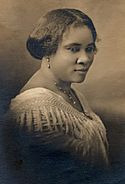 |
(1867–1919) | 1905 | Walker was a smart businesswoman, a generous giver, and an activist. She is known as the first self-made female millionaire in America! |
| Elijah | Wentworth | Known as "Lige," he was born into slavery in Virginia. He came to Missouri and then traveled west as a cook on a wagon train. He was a town crier and singer in Denver, welcoming people at Union Station. | |||
| Cathay | Williams | (1844–1893) | 1868 (after) | She was an African American soldier who joined the United States Army pretending to be a man named William Cathay. She was the first Black woman to enlist and the only documented woman to serve in the U.S. Army disguised as a man during the American Indian Wars. | |
Places to Explore
- Barney L. Ford Building: This historic building is on the National Register of Historic Places. It was a stop on the Underground Railroad, helping people escape slavery.
- Cold Spring Mountain: This is where Isom Dart had his ranch.
- Dearfield, Colorado: This was one of 14 towns in the West created for African Americans, inspired by Booker T. Washington. It's now a ghost town, but its history is important.
- The Denver Star: This was a Black newspaper published in Denver from 1888 until 1963.
- Five Points, Denver: This is a historic neighborhood in Denver where many African Americans lived and built businesses.
- Fort Garland: Located in Costilla County, this fort was home to Black soldiers known as Buffalo Soldiers from 1876 to 1879.
- History of slavery in Colorado: Learn more about the history of slavery in Colorado.
- Lincoln Hills, Colorado: Opened in 1922 by Black business owners from Denver's Five Points, Denver neighborhood, this place offered food and lodging for African Americans traveling.

All content from Kiddle encyclopedia articles (including the article images and facts) can be freely used under Attribution-ShareAlike license, unless stated otherwise. Cite this article:
List of African American pioneers of Colorado Facts for Kids. Kiddle Encyclopedia.
